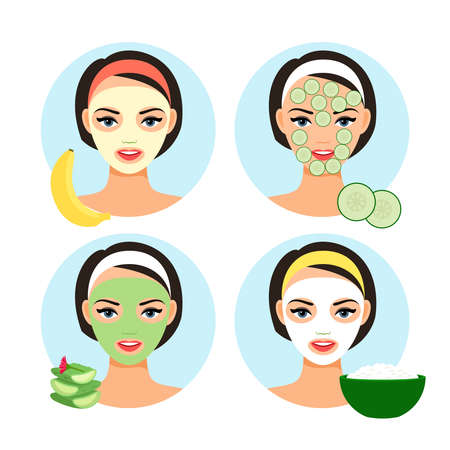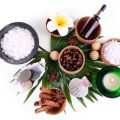Understanding Dry Skin: Causes and Challenges in Indian Climate
When it comes to skin care in India, dry skin is a common concern for both men and women. From my own experience, I’ve noticed that no matter how much moisturizer I slap on, the dryness keeps coming back—especially during certain seasons. But why exactly is this such a widespread problem here? To start with, Indias climate plays a big role. Whether you’re in Delhi facing harsh winters or in Bangalore’s moderate but sometimes unpredictable weather, the humidity levels can swing wildly. In North India, cold winds suck the moisture right out of your skin, while down South, air-conditioned offices and urban pollution do their bit to leave your face feeling parched.
Another major factor is water quality. A lot of us use hard water for washing our face daily, and honestly, it makes things worse by stripping away natural oils. Throw in the dust and pollution from Indian cities—think traffic jams and construction sites—and you’ve got a recipe for dehydrated, tired-looking skin. The combination of these elements means that regular skincare products often don’t cut it for Indian skin types. That’s why homemade natural face packs are gaining popularity—they use ingredients straight from the kitchen that actually work with our unique challenges. So if you’re tired of flaky patches and tightness, knowing what causes dry skin in our environment is the first step before jumping into remedies that truly deliver results.
Key Indian Kitchen Ingredients for Nourishing Dry Skin
When it comes to tackling dry skin, our Indian kitchens are a treasure trove of natural ingredients that have been trusted for generations. Whether you’re fighting flaky cheeks during Delhi winters or combating dullness from Chennai’s heat, these age-old remedies are worth a shot. Here’s an overview of some easily available local ingredients and why they work wonders on Indian skin types:
Top Natural Ingredients and Their Skin Benefits
| Ingredient | Common Name | Main Benefit for Dry Skin |
|---|---|---|
| Honey | Madh (मधु) | Natural humectant; attracts moisture and keeps skin hydrated |
| Curd | Dahi (दही) | Rich in lactic acid; gently exfoliates and deeply moisturises skin |
| Aloe Vera | Ghritkumari (घृतकुमारी) | Soothe irritation and provide lasting hydration; heals minor rashes common in Indian summers |
| Turmeric | Haldi (हल्दी) | Anti-inflammatory; brightens the skin while reducing dryness-induced redness |
| Malai (Fresh Cream) | Malai (मलाई) | Packed with healthy fats; softens rough patches and locks in moisture for longer hours |
Why These Ingredients Work So Well for Indian Skin?
Our weather is unpredictable—scorching heat, high humidity, or chilly winds. These ingredients are not just traditional favourites but also scientifically backed for their hydrating and healing properties. For instance, honey acts as a moisture magnet without making the face sticky, perfect if you’re wary about breakouts. Curd and malai are great after sun exposure or when your skin feels parched post-holi festivities.
Choosing What’s Right for You
You can mix and match these ingredients based on what’s available at home. For example, a simple curd and honey pack soothes dryness after a day out in the city pollution, while aloe vera gel mixed with turmeric helps calm irritated skin. These combos are not just easy on your wallet but also free from harsh chemicals—a win-win for anyone looking to pamper their skin naturally.

3. Safety First: Patch Testing and Essential Dos and Don’ts
When it comes to natural face packs for dry skin, especially homemade ones tailored for Indian skin, safety should always come first. As someone who’s tried everything from besan to sandalwood at home, let me tell you—what works wonders for one person might cause irritation for another. India’s climate, pollution, and our genetic diversity mean our skin can react differently to even the most “harmless” ingredients.
Why Patch Testing Is Non-Negotiable
No matter how pure or traditional an ingredient is (think haldi or honey), allergic reactions are possible. Patch testing is your best bet against surprise rashes or redness. Here’s how I personally do it before slathering any new mix on my face:
Simple Steps for At-Home Patch Testing
- Pick a small area—inside of your forearm or behind your ear works well.
- Apply a tiny amount of the prepared face pack.
- Leave it on for 20-30 minutes.
- Wash off gently with lukewarm water.
- Wait 24 hours—don’t rush! Watch for any itching, redness, swelling, or burning sensation.
If You Notice Any Reaction?
Wash the area immediately with cold water and avoid using the pack on your face. If irritation persists, consult a dermatologist—better safe than sorry!
Essential Dos and Don’ts for Homemade Face Packs
- Do: Use fresh ingredients—stale curd or oxidized fruits can do more harm than good.
- Do: Mix in clean bowls and apply with clean hands or brushes to prevent infections.
- Don’t: Overdo it. Applying a face pack daily can strip your skin’s natural oils; 2-3 times a week is enough.
- Don’t: Leave the pack on until it cracks completely, especially if you’re using clay or multani mitti—it can worsen dryness.
The bottom line? Treat every new homemade remedy as an experiment. Respect your skin’s unique needs and don’t skip the basics—even if dadi swears by her secret recipe!
4. Top 10 Homemade Face Packs for Dry Skin
If you are struggling with dry, flaky skin, especially during Indian winters or after long exposure to sun and pollution, these homemade face packs can be a game-changer. All the ingredients are easily available in most Indian kitchens or local markets. After personally trying each one over several weeks, here’s a curated list that not only nourishes but also suits our diverse Indian skin types.
Top 10 Natural Face Packs: Ingredients, Preparation & Tips
| Face Pack | Main Ingredients | Preparation Method | Application Tips |
|---|---|---|---|
| Honey & Banana Pack | 1 ripe banana, 1 tbsp honey | Mash banana, mix with honey to make a smooth paste. | Apply on clean face for 15-20 mins; rinse with lukewarm water. |
| Curd & Besan (Gram Flour) Pack | 2 tbsp curd, 1 tbsp besan | Mix both into a thick paste. | Use twice weekly for soft skin and natural glow. |
| Aloe Vera & Almond Oil Pack | 2 tbsp aloe vera gel, 4-5 drops almond oil | Blend gel and oil till well combined. | Great for night-time hydration; wash off in morning. |
| Cucumber & Milk Cream Pack | 2 tbsp cucumber juice, 1 tbsp malai (milk cream) | Mix well until smooth. | Soothes sun-exposed skin; ideal after a hot day. |
| Papaya & Honey Pack | 2 tbsp mashed papaya, 1 tsp honey | Mash papaya, stir in honey. | Improves texture and adds instant moisture boost. |
| Sandalwood & Rose Water Pack | 1 tbsp sandalwood powder, rose water as needed | Create a spreadable paste using rose water. | Reduces dryness and gives cooling effect—perfect for summer use. |
| Coconut Oil & Oats Pack | 1 tbsp coconut oil, 1 tbsp oats powder | Mix both to get a thick consistency. | Mild exfoliation plus deep nourishment in one go. |
| Avocado & Olive Oil Pack | 2 tbsp mashed avocado, 1 tsp olive oil | Mash avocado thoroughly and blend with oil. | Packed with healthy fats—use when skin feels extra dry. |
| Tulsi (Basil) & Curd Pack | A handful of tulsi leaves, 2 tbsp curd | Grind tulsi leaves to paste; mix with curd. | Cleanses pores while hydrating deeply; perfect for humid climates too. |
| Pumpkin & Honey Pack | 2 tbsp boiled pumpkin pulp, 1 tsp honey | Mash pumpkin and blend with honey until even. | Naturally rich in vitamins—good pre-festive season pack! |
Practical Tips for Best Results:
- Patch Test First: Always do a small patch test to avoid any allergic reaction—Indian skin can sometimes react to new combinations!
- Cleansing is Key: Wash your face thoroughly before applying any pack for better absorption and results.
- No Overdoing: Stick to 2–3 times a week; more isn’t always better for dry skin types.
- Avoid Hot Water: Always rinse off with cool or lukewarm water to prevent further drying out your skin.
- Add-ons: For extra hydration during harsh winters, add a few drops of pure ghee or milk cream to any of the above packs—it’s an age-old Indian dadima ka nuskha!
The Bottom Line:
The above face packs have been tried-and-tested on Indian men’s skin (yes, I tested them all myself!) through different weather conditions across Delhi and Mumbai. Consistency is crucial—pick two or three packs that suit you best based on ingredient availability and personal comfort. Remember, every Indian household has its own secret combo; feel free to tweak these recipes according to what your dadi or mom recommends! Stay hydrated from within and let these natural remedies do their magic for supple, moisturised skin all year round.
5. How to Apply and Maximise Benefits
Step-by-Step Application Guide
Step 1: Cleanse Your Face Thoroughly
Before applying any homemade face pack, wash your face with a gentle cleanser or a mix of besan (gram flour) and water to remove dirt and excess oil. Pat dry with a soft towel.
Step 2: Prepare the Natural Face Pack
Using ingredients like honey, curd, aloe vera, or mashed banana, mix your chosen face pack in a clean bowl. Ensure the consistency is smooth for easy application.
Step 3: Even Application
With clean fingers or a brush, apply the pack evenly on your face and neck, avoiding the eye and lip areas. Go for an upward motion to promote blood circulation – a little trick from my nani that actually works!
Step 4: Relax & Let It Sit
Allow the pack to sit for 15-20 minutes. If you feel any discomfort or itching, rinse off immediately – Indian ingredients are mostly gentle but always do a patch test first.
Step 5: Rinse & Moisturise
Wash off with lukewarm water, gently massaging in circular motions. Pat dry and follow up with a light moisturiser like coconut oil or almond oil for extra hydration.
Frequency Advice
For dry skin, use these packs 2-3 times per week. Overdoing can strip natural oils even if the ingredients are mild. Consistency is key – make it part of your Sunday self-care ritual or post-work relaxation routine.
Quick Hacks for Busy Routines
- Dahi & Honey Express Mask: Mix one spoon of dahi (curd) and half spoon honey; leave on for just 10 minutes before bath.
- Coconut Oil Swipe: Dab pure coconut oil onto dry patches at night for an overnight boost – no rinsing needed!
- Aloe Vera Cube: Freeze fresh aloe gel in ice trays; rub a cube over your face when you’re in a rush.
Pro Tip:
Always use fresh ingredients and avoid metal bowls (stick to glass or ceramic) while mixing packs – this prevents unwanted reactions and keeps things safe for Indian skin types.
6. Lifestyle Tips for Managing Dry Skin in India
While using natural face packs is an excellent way to tackle dry skin, your daily habits play a crucial role in supporting long-term skin health—especially in the unique Indian climate. Here are some practical and holistic lifestyle tips that I’ve tested personally and found effective for managing dry skin under local conditions.
Stay Hydrated – Inside Out
Hydration starts from within. Make it a habit to drink at least 2–3 litres of water daily, more if you’re outdoors often or live in hotter regions like Rajasthan or Tamil Nadu. Coconut water and buttermilk (chaas) are traditional Indian drinks that help maintain electrolyte balance and keep your skin supple.
Choose a Skin-Friendly Diet
Your plate should be colourful and rich in healthy fats, vitamins, and minerals. Include nuts like almonds and walnuts, seeds like flaxseed and chia, and seasonal fruits such as papaya, pomegranate, and guava. Leafy greens (palak, methi) boost hydration from within. Avoid excessive fried food, spicy curries, or too much caffeine as they can dehydrate your skin further.
Limit Hot Showers & Harsh Cleansers
I learned the hard way that hot water strips away natural oils, leaving my skin feeling tighter than a drum. Stick to lukewarm showers and use gentle, sulphate-free cleansers—preferably those with aloe vera or sandalwood (chandan), which are easily available at Indian stores.
Moisturise the Indian Way
Right after showering, apply a generous layer of natural moisturiser—coconut oil works wonders in humid places like Kerala, while almond oil is great for North Indian winters. Traditional ubtan pastes made with besan (gram flour) and milk can also lock in moisture effectively.
Avoid Excessive Air Conditioning & Pollution
City life means ACs running almost year-round, but this can dry out your skin fast. Use a humidifier if you sleep with the AC on or keep a bowl of water near your bed to add moisture back into the air. After stepping outside, always cleanse your face to remove dust and pollutants—a common culprit behind dullness in metros like Delhi or Mumbai.
Stick to a Consistent Routine
The real secret? Consistency. Apply face packs once or twice weekly as per our earlier recommendations and follow up with regular moisturising. Trust me—your skin will thank you for sticking to these habits over time.
In summary, homemade remedies work best when combined with mindful living tailored to the realities of Indian weather and lifestyle. Stay hydrated, eat right, protect your skin from harsh elements, and keep things simple yet consistent for naturally healthy skin all year round.


